A good way to start a spirited discussion at a gun shop or hunting camp is to bring up the subject of handguns for protection from large animals. The conversation gets really interesting when no one involved owns or has even shot one of the guns mentioned. All input is “facts” gleaned from magazine articles.
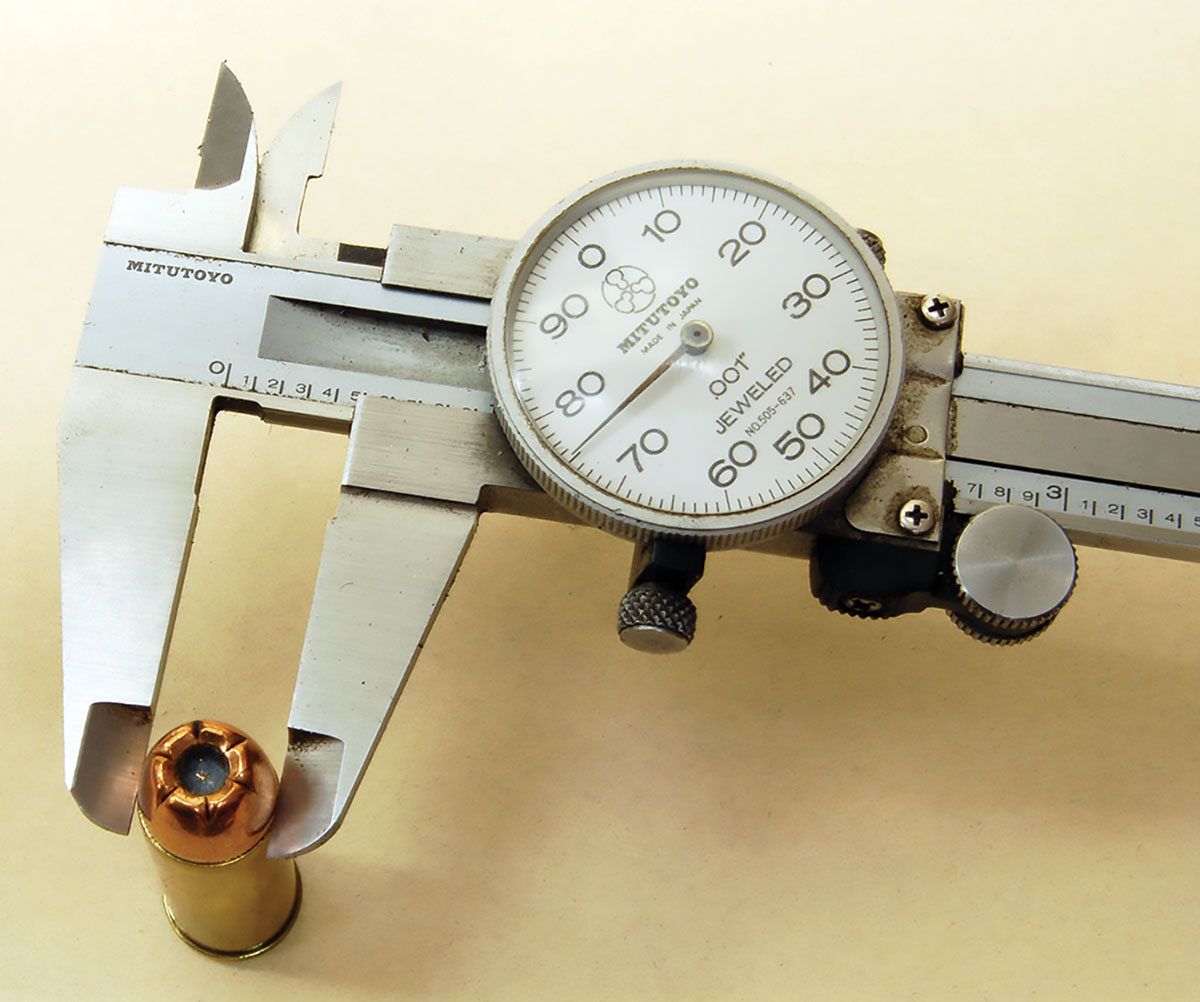
The bullet of the 480 Ruger is a unique .475-inch diameter.
The animals in question are always huge grizzlies that come rushing out of the forest to attack some unlucky soul who is camping or fishing. Regarding that last scenario, an Alaskan I fished with many years ago had a wise response when asked his opinion regarding handguns for protection from bears. “Anything works for me,” he would say, “because when I go fishing and there appears to be even a chance of encountering a bear, well, I go fish somewhere else.”
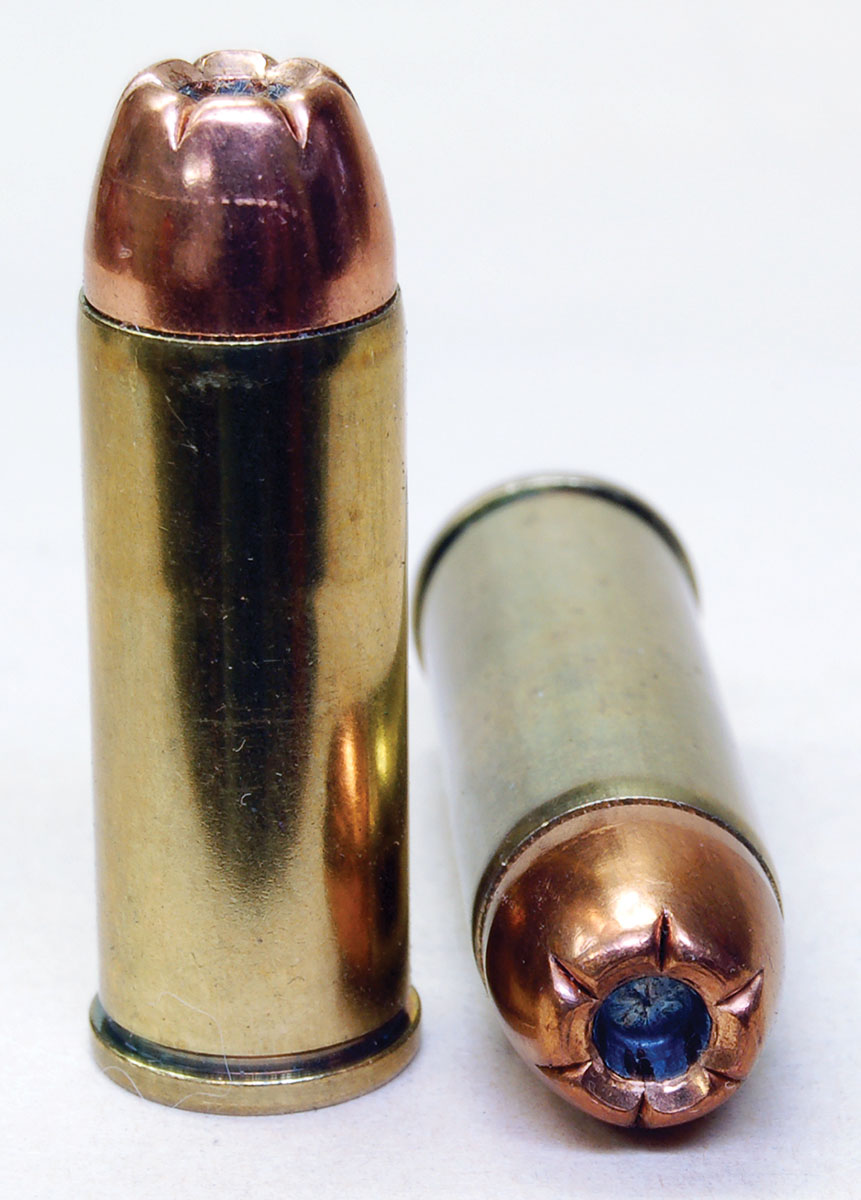
The Hornady XTP-Mag bullet in a 480 factory load is said to have proven itself on deer and elk.
Armchair experts have insisted for years that any handgun from the 44 Magnum or hot-loaded 45 Colt on up, is entirely adequate for protection from the biggest bears, simply because handgun hunters have taken many of these animals. That may sound logical, but when hunting potentially dangerous game, every attempt is made to get into position and make a fatal shot before the animal is aware of the hunter’s presence. In a self-defense situation, the roles are reversed. The human may not know about the animal’s presence until it is very close. This shines a different light on the subject. The maximum amount of raw horsepower possible is desirable, keeping in mind that a large-caliber hunting rifle has the power to put down large game quickly.
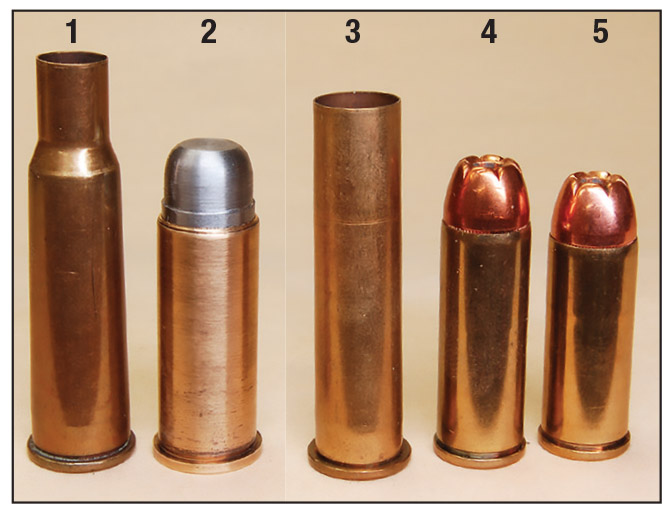
Shown first is the (1) 348 Winchester case that was shortened to make the (2) 500 Linebaugh, then the (3) 45-70 case that was shortened to make the (4) 475 Linebaugh and shortened again to create the (5) 480 Ruger.
A much broader application for such handguns is hunting hogs, deer and other big game. Carried in a chest holster on the outside of a jacket, the gun is out of the way of a daypack and quicker to get into action than a slung rifle. A big revolver is perfect for use in a ground blind because there is no problem of what to do with it when the owner sits down. Tree stand use is even better since there is no pulling up or lowering on a rope like a rifle. Revolvers also won’t tip over or fall out of the blind as rifles sometimes do.
It was into the hunting role that Ruger cast its Super Redhawk revolver chambered for 44 magnum in 1987. It was obvious at the time that the gun was overbuilt for the 44 round. Something else was coming if the trend toward more powerful hunting rounds continued. It was and it did. The Super Redhawk in 454 Casull was announced in 1999. Then, something strange happened.
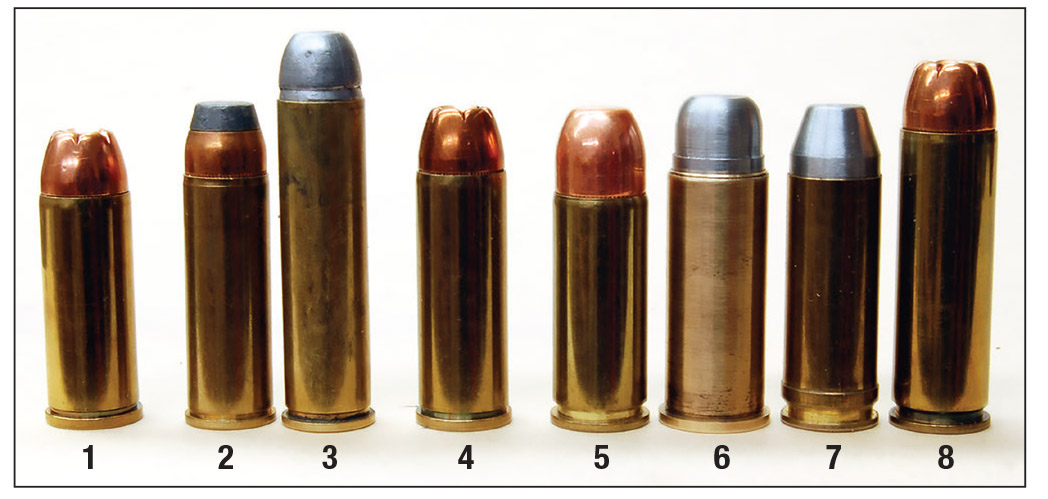
The (1) 480 Ruger appears small compared to other big revolver rounds like the (2) 454 Casull, (3) 460 S&W, (4) 475 Linebaugh, (5) 500 Special, (6) 500 Linebaugh, (7) 500 Wyoming Express and (8) 500 S&W.
Some reviewers of the gun/cartridge indicated extraction difficulties with factory loads, while others did not. The condition was blamed on rough chambers or simply ignored. The Freedom Arms single action had chambered the 454 for nearly 20 years with no problems. Yet, it was not baffling and should have been expected.
The 454 Casull’s maximum average pressure (map) is 65,000 pounds per square inch (transducer), the same as the 300 Weatherby. Cases expand at the base at this pressure if not drawn hard enough to prevent it. My limited experience with the Freedom Arms revolver shows fired cases don’t fall out of the chambers by any means, but are easily pushed by the rod ejector one at a time. Swing-out cylinder guns require five or six empties to be pulled out at the same time by pushing on the small end of an extractor road. Obviously, six times the force is required as for the single-action gun.
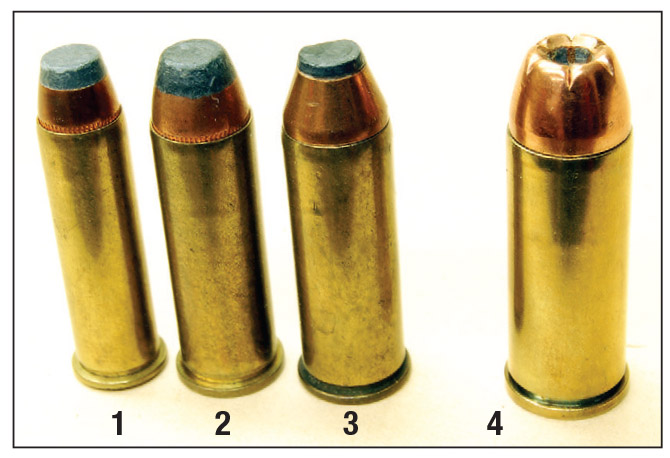
On the other hand, yesterday’s magnums, (1) 357 Magnum, (2) 41 Magnum and (3) 44 Magnum look small compared to the (4) 480 Ruger, which isn’t even called a magnum.
Certainly, Ruger and the folks reviewing the revolver should have known this. Or didn’t anyone ever fire a cylinder full of the things? Perhaps it was believed that in a self-defense situation with a big, bad bear, that after firing a cylinder full, the disagreement would have been settled either in the bear’s favor or the human’s and the ability to reload became a moot point. Harder cases would have been better though. Apparently, this has since been corrected.
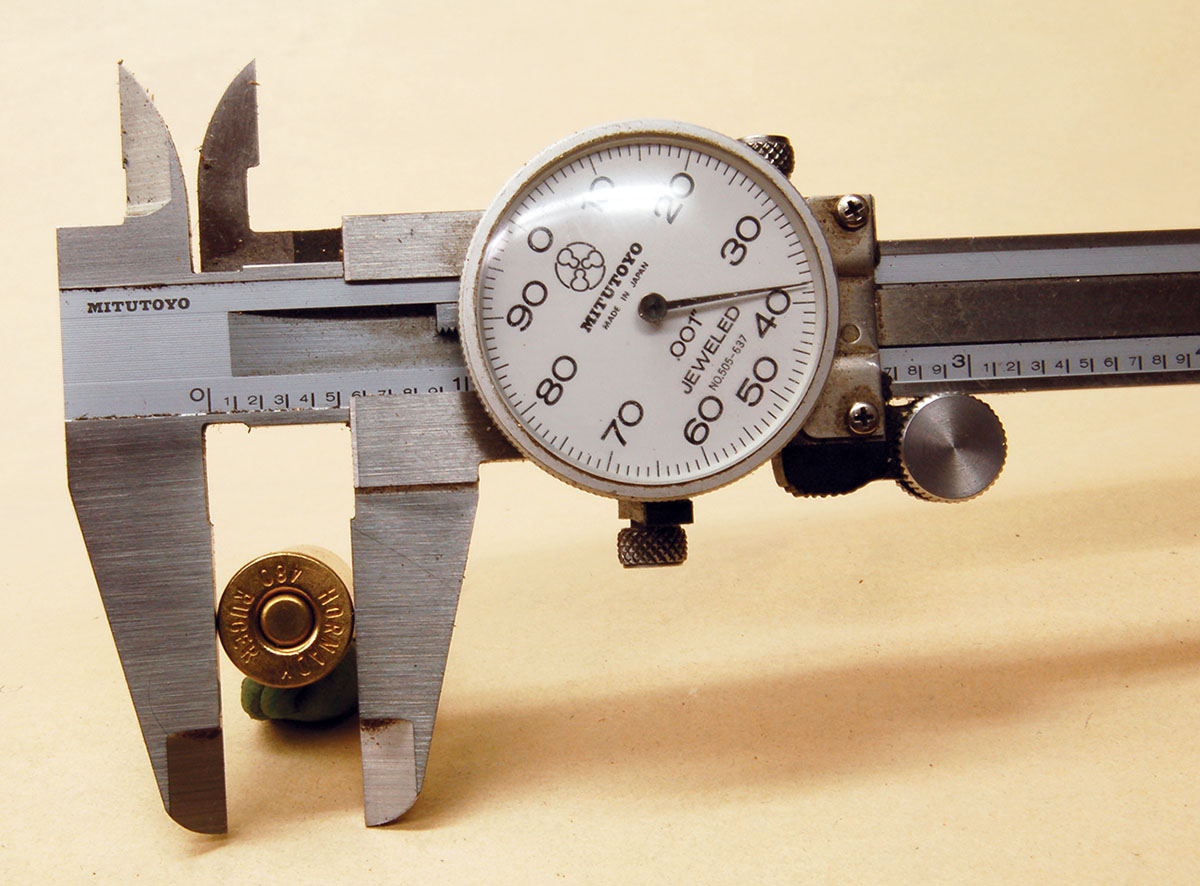
The 480 rim diameter has been reduced greatly from its parent 45-70 case’s .610 inch so it will fit the Redhawk cylinder.
With Ruger now chambering the Super Redhawk in 454 Casull (at half the price of the Freedom Arms M83), it was assumed the company would just sit back and make revolvers. But no. In early 2001, Ruger and Hornady jointly announced a new cartridge, the 480 Ruger.
The first question on everyone’s mind was – why? Hornady loads gave a 325-grain XTP-Mag bullet 1,350 feet per second (fps) and 1,315 foot-pounds of energy at the muzzle of the Ruger’s 7.5-inch barrel. Next was a 400-grain XTP-Mag at 1,100 fps for 1,075 foot-pounds of energy. This is from 10-40 percent less energy than the various 454 Casull loadings.
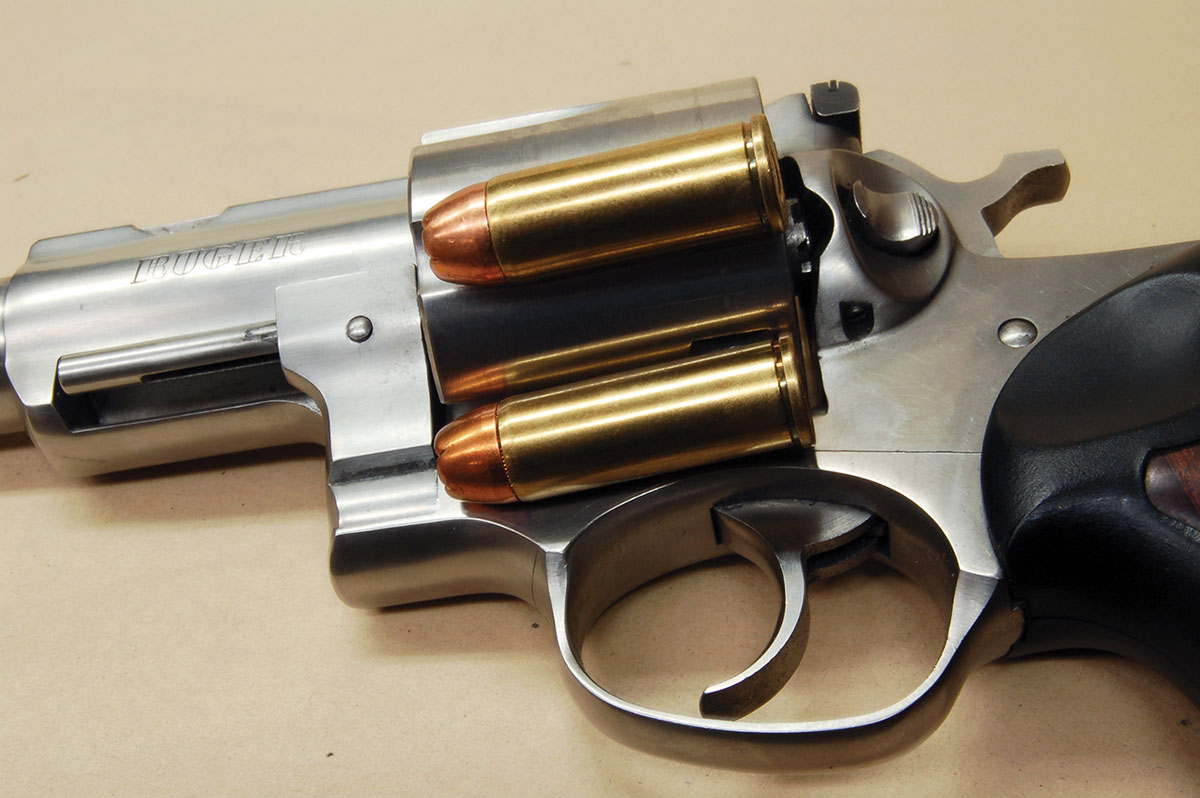
The 475 Linebaugh (lower) is too long for the Ruger cylinder. When shortened to 480 Ruger length, it fits nicely with a little extra to allow for bullet creep under recoil.
The second question is, where did the 480s bullet diameter come from? It is .475 inch. Surprisingly, this is quite simple. The chronicles tell us that in 1985, a fellow by the name of John Linebaugh wanted a powerful round for a big, five-shot, single-action revolver that did not use the high pressure of the 454 Casull. He found that cutting the 348 Winchester case to 1.4 inches and expanding the mouth for the .50-caliber (.510 inch) bullets left a nearly straight case. He called it the 500 Linebaugh. Perhaps this was too much of a good thing because the same idea was next used on the 45-70 case. The bullet diameter became .475 inch after shortening to 1.4 inches. It became the 475 Linebaugh.
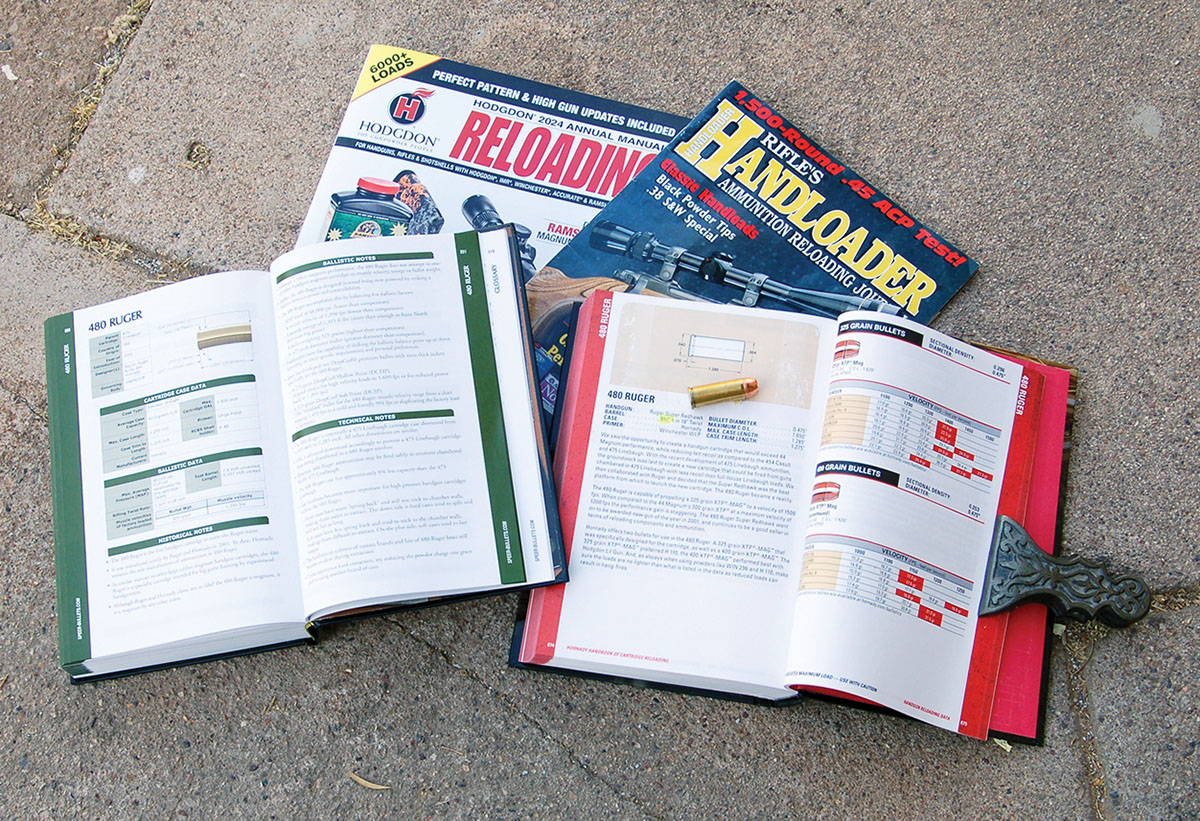
There is a lot of handloading data available if the components can be found. Shown here are Speer, Hornady, Hodgdon and Handloader books and magazines that contain data.
The rumor was that Ruger wasn’t interested because the Linebaugh was too long for the Super Redhawk cylinder. Thus, Ruger shortened the Linebaugh case from 1.4 to 1.285 inches and the maximum cartridge length to 1.650 inches, though some cast bullets will make it a bit longer. The shorter length also allows for some bullet creep due to the heavy recoil. For this reason, new cases are generally recommended for maximum loads to give the strongest crimps possible.
The 480 Ruger started out slowly. Besides the two Hornady loadings, Cor-Bon listed a 275-grain bullet at 1,550 fps, giving 1,467 foot-pounds at the muzzle. Speer also loaded a 275-grain bullet at 1,450 fps with 1,284 foot-pounds and a 325-grain bullet at 1,350 fps with 1,315 foot-pounds all from 7.5-inch barrels. By 2013, Federal had added a 275-grain Barnes bullet at 1,315 fps with 1,115 foot-pounds of energy. By 2017, only the 275-grain Federal bullet and the 325-grain Hornady loads remained. Today, only the Hornady load could be verified. Concerning ammunition today, however, whether something is on a list or not means little. Follow the rule of “if you see it, buy it!”
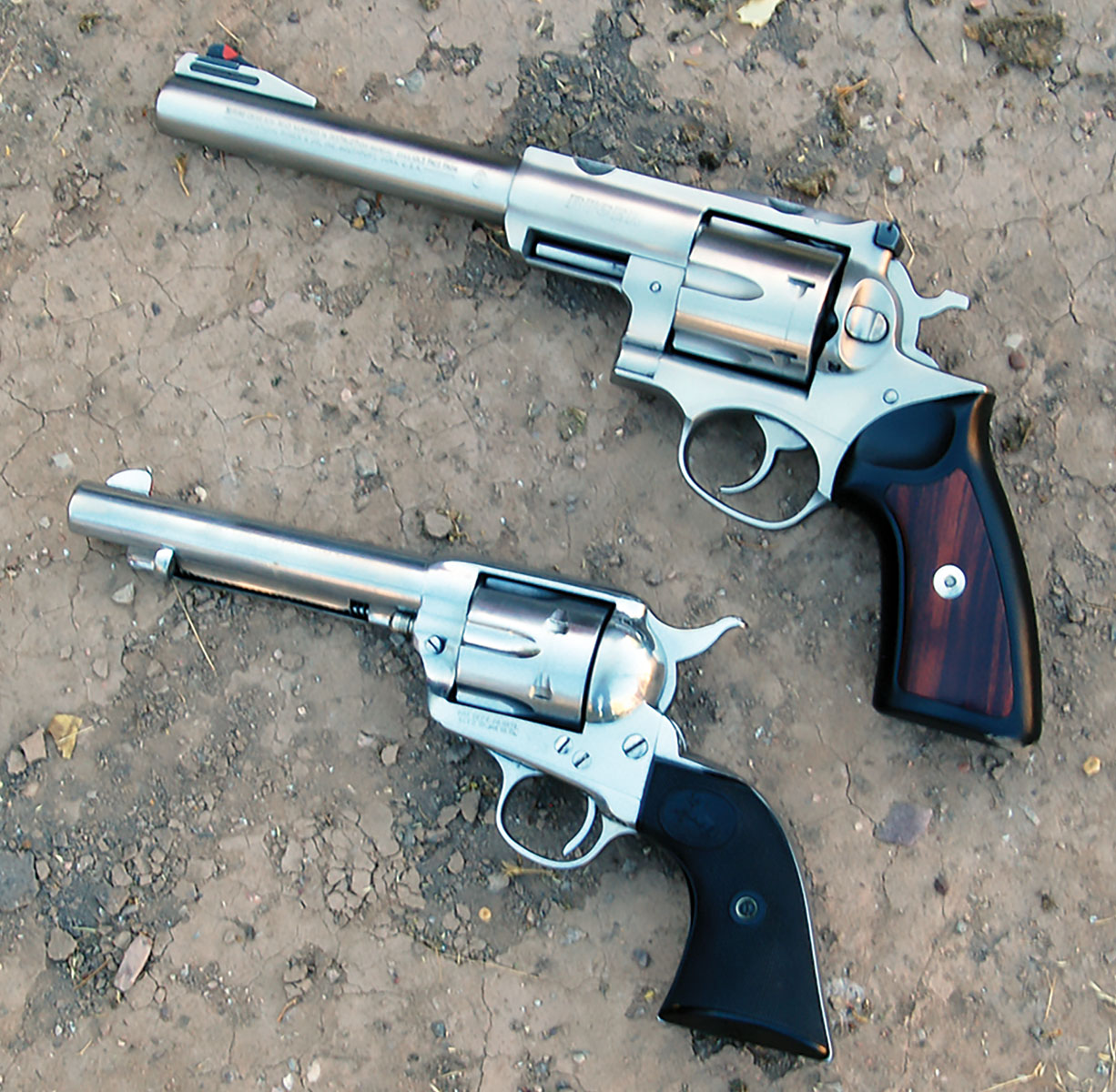
The Ruger Super Redhawk (top) is a big revolver compared to the 45 Colt SAA (bottom).
For components, the same rule applies. Hornady and Starline cases are where you find them. The Hornady and Speer bullets in the load table were purchased with a new Super Redhawk by its owner. He hasn’t been able to get any since. The Hornady 400-grain was dropped in 2014, while the Hornady 325-grain was dropped in 2021.
Even though there are a few revolver rounds that are more powerful than the 480 Ruger, it still has 1,000 foot-pounds of energy left at 125 yards. This should be adequate for deer and maybe elk without having to chase them too far. Recoil and blast are also tolerable. However, I know I will never fire another 454 Casull without two forms of ear protection. It is interesting how in almost every write-up on these big rounds, that the author somewhere indicates they are not bothered by recoil or muzzle blast – or walking barefoot over red-hot coals or jumping into the mouths of active volcanoes.
The cost of a Super Redhawk is much less than a custom revolver. If the owner decides handgun hunting and truly big-bore revolvers are not his cup of tea, the gun is readily available. Perhaps Ruger and Hornady knew exactly what they were doing and the 480 Ruger is not the conundrum many believe it to be.
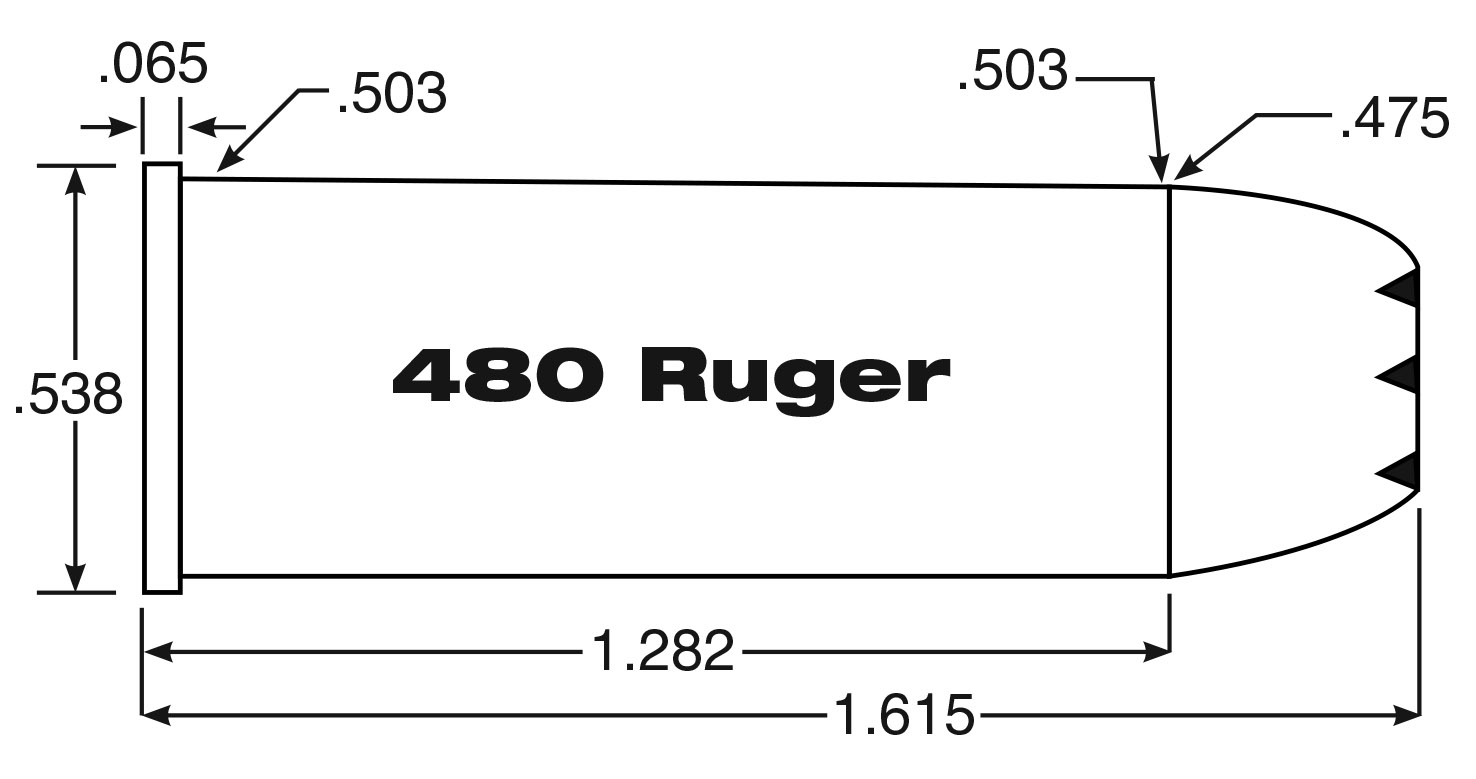









.jpg)


